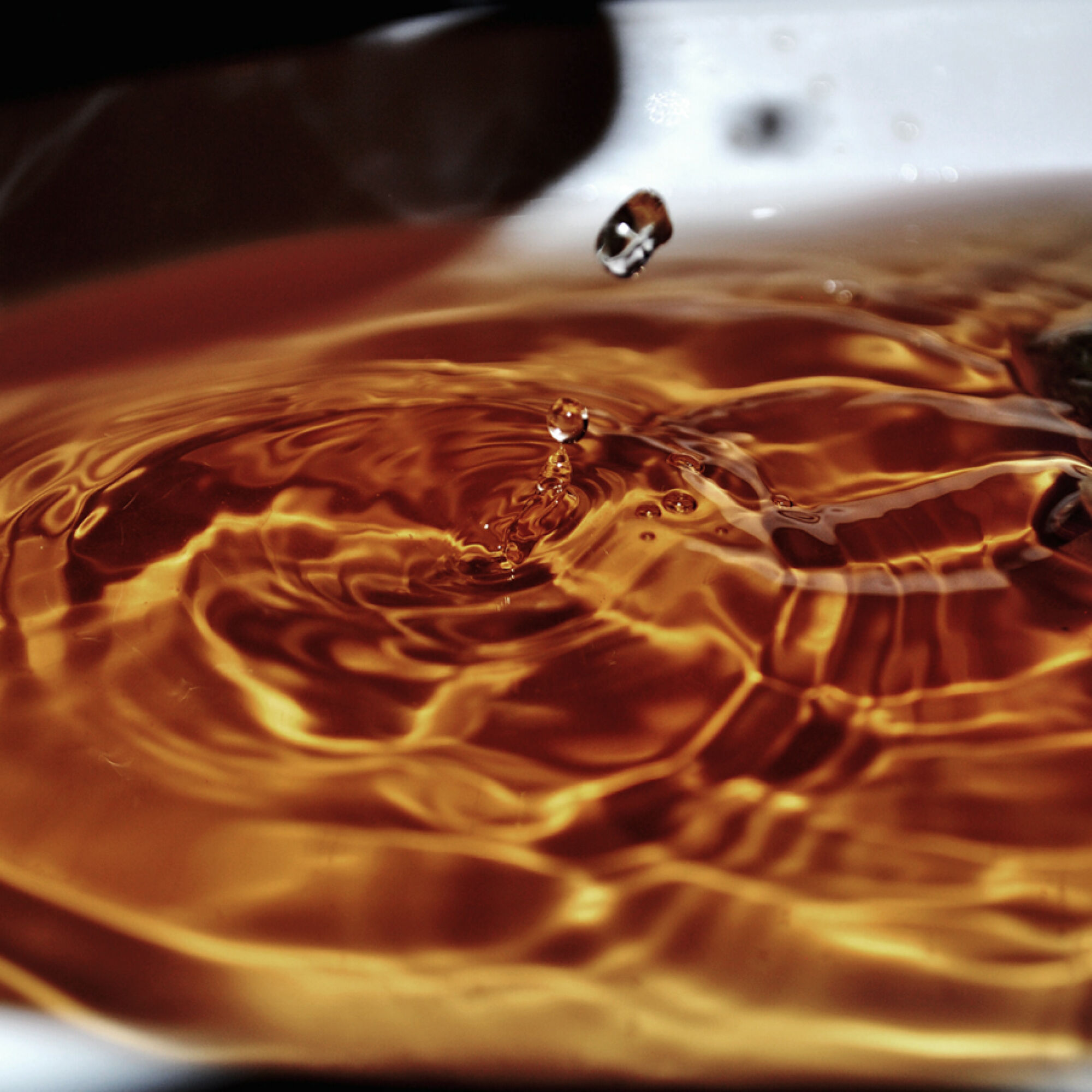In good tea we trust.
For us, there is nothing more exciting than tea.
We simply cannot get enough of its unique diversity of flavours and we are fascinated by its origins. Perfect tea is our obsession – this can be tasted in each of our 40 teas and infusions.
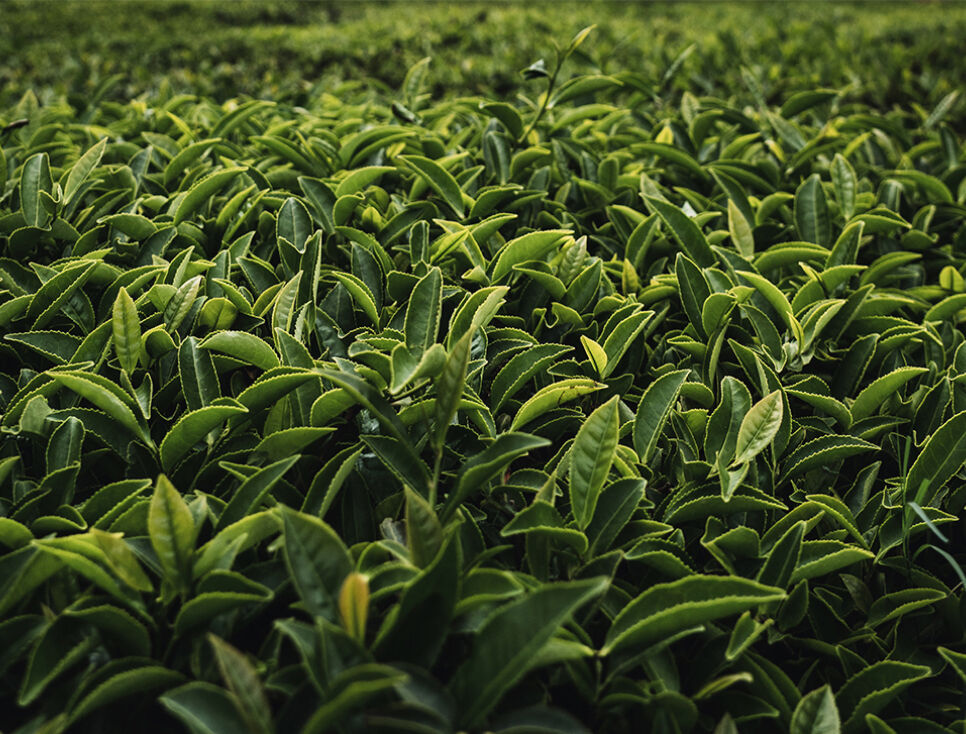
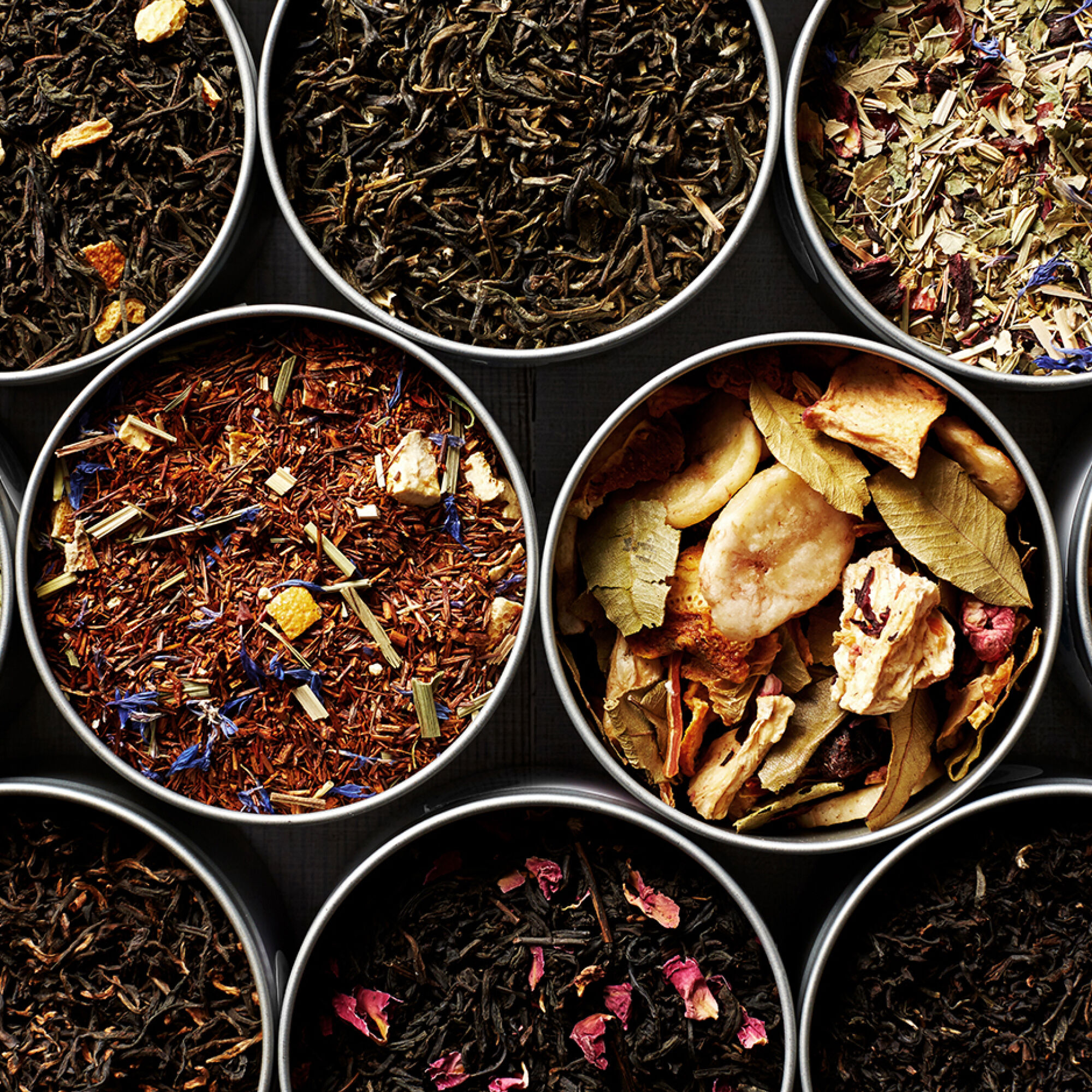
The best part of our job?
We get to taste, taste and taste again.
To compose a really good tea, you need the right feel and above all an irrepressible thirst to get to know everything about it.
Every tea has a different taste and every person’s sense of taste is different. This is why we don’t solely rely on our personal perceptions but use the expertise of our specialists. Our various tea varieties are developed together with a team of experienced tea sensory assessors and sommeliers. And we don’t limit ourselves to our extensive knowledge of the individual teas and their taste – we also love to be inspired by new trends.
Sometimes the best ideas for new compositions only come to us after we’ve left work.
For example, we came up with the idea of creating a tea interpretation of the popular Aperol Spritz cocktail while sitting in a bar. That idea became our fruit infusion BITTER ORANGE. With its tart-sweet aroma of sun-ripened oranges, it also makes a delicious chilled drink in summer. But our classics are anything but ordinary either. For our THE CAMOMILE, for instance, we process substantially more of the whole flowers. Not only does it look delicious, this also gives it a very full aroma.
Each tea originates from the same root.
Every tea is as individual as its diverse taste profile. And yet they all come from the same plant – black, white and green tea.
Camellia sinensis is the Latin name for the Chinese tea bush, the mother of all teas. Tea comes exclusively from the leaves, buds and delicate stems of this plant. Infusions, on the other hand, are made of fruit or herbs and should really be referred to as “tea-like products”.
Two varieties
Tea is generally divided into two varieties: the Chinese sinensis variety has small, delicate leaves that grow slowly. Although it produces less of a yield, it can also be cultivated in non-tropical regions. When brewed, this tea has an attractive, light colour and an aromatic mild-flowery flavour. We suggest you try our LEGEND OF PAI MU TAN to explore this variety.
Next up is the assamica variety, which was cultivated by the British and is mostly used for the production of black tea. Originating from Northeast India, the Assam area is now the largest contiguous tea growing area in the world. Assamica is characterised by its yield and strong taste – as with our STRONG ASSAM, with its intense malty-spicy character.
The wild card – herbal and fruit infusions.
In Germany, herbal and fruit infusions are even more popular than classic teas. This comes as no surprise, because with an infinite number of ingredients and combination options, each one truly has its own character. From the irresistibly fruity-creamy CREAMY STRAWBERRY and the fresh-spicy CLUB GINGER to the intense, chocolaty PURE CHOC, the new creations are so popular, they are proving to be competition for smoothies and mixed drinks – even though they are entirely caffeine-free.
When tasting Mother Nature makes you feel good.
Because if it’s sustainably produced, you can enjoy it with a clear conscience. That’s why all the ingredients of our teas and infusions bear at least one seal that only certified plantations receive - be it Fairtade, Rainforest or an organic seal or several seals at the same like our HONEY ROOIBOS. It comes from the Cederberg mountains in the Western Cape of South Africa and is certified organic and bears a Rainforest Allicance seal.
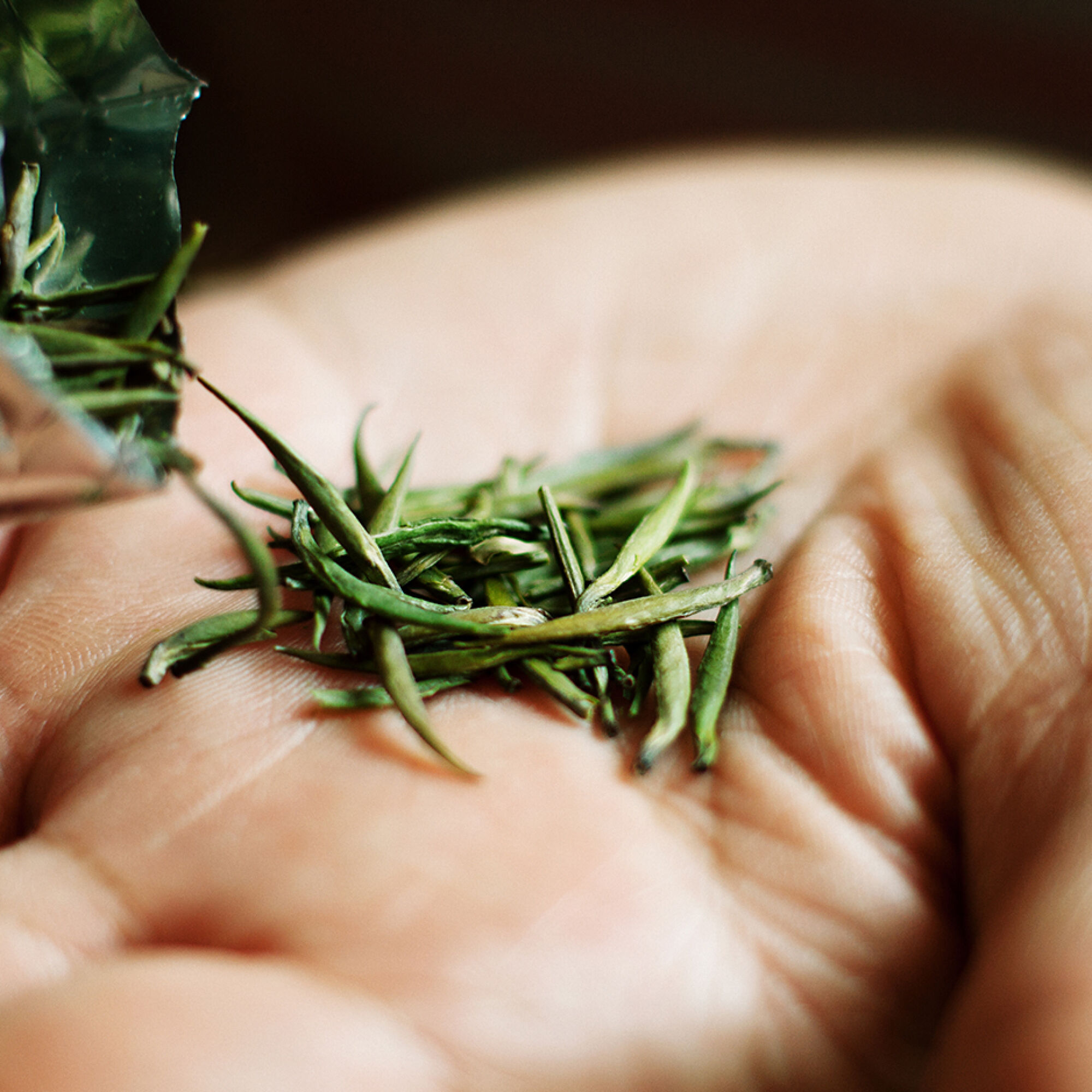
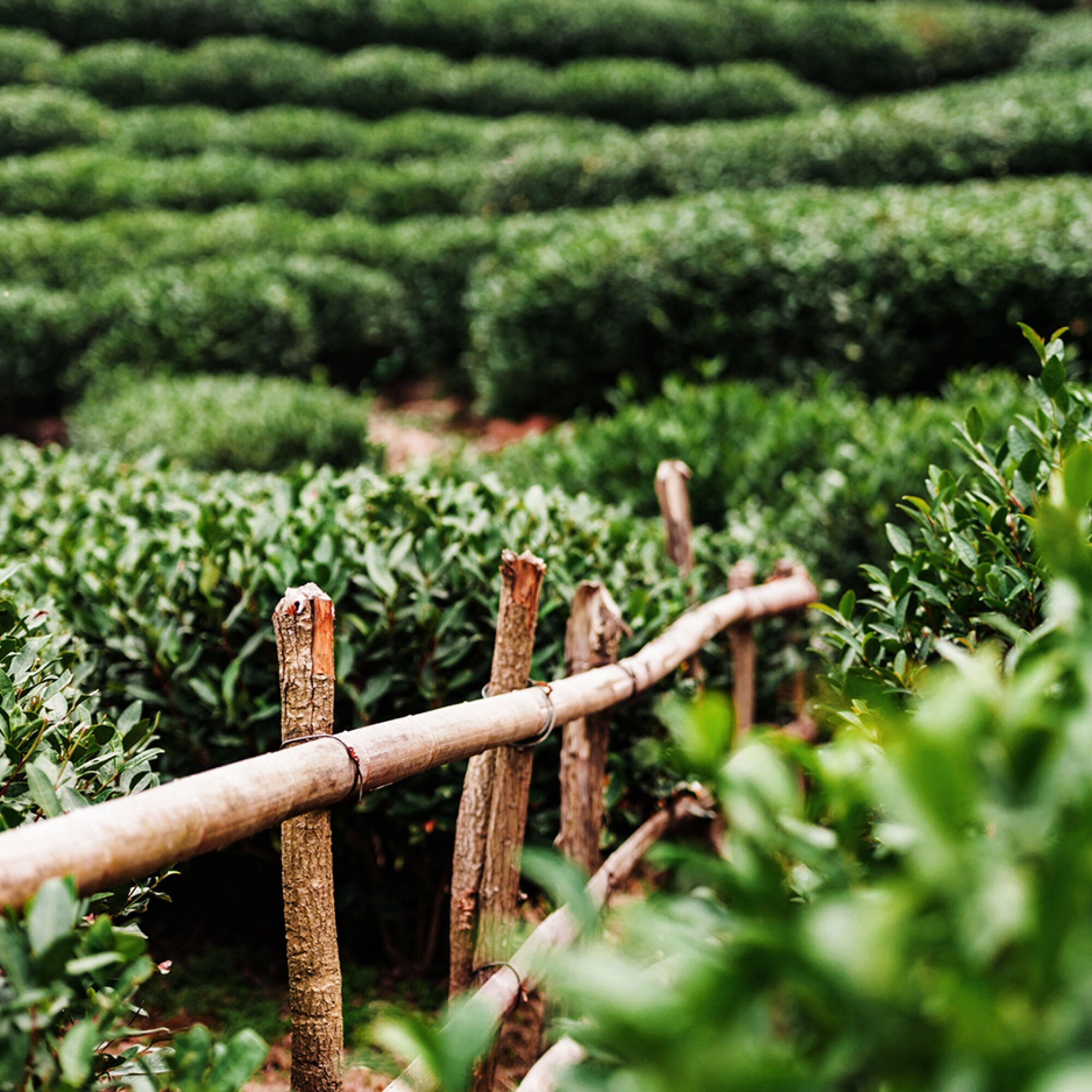
No, tea does not grow in bags.
Unique in origin.
The aromas that make each tea unique originate in the countless growing areas of the world. The unique taste of each tea comes from different soils, climate conditions and individual production methods. With its elegant, fresh-smelling character, our SUPREME GYOKURO, which comes from a small growing area in Japan, is thus entirely different from our PREMIUM DARJEELING with its slightly nutty note of muscatel. This is grown in northern India on the slopes of the Himalayas.
In general, the tea plant Camellia sinensis grows best in loose soil that is rich in humus and slightly acidic. Temperatures should be around 19 °C, with hot, wet summers and mild, dry winters Another decisive factor for the quality of a tea’s taste is the altitude. The higher the growing area, the slower the plant will grow and the more tender the leaf becomes, which in turn translates into a higher quality.
Originals with origin.
Avoury tea is produced in large, prestigious growing areas as well as on smaller private plantations that produce very special quality. Some of our tea is sourced from the Indian district of Darjeeling, for example, which is a growing region that most people are probably aware of. However, what is not so well known is that high-quality teas are also grown in Rwanda. For our EARL GREY and LADY ROSE duo, we selected a tea plantation in Rukeri, in north-western Rwanda. With nutrient-rich soil and a warm, humid climate, this area is perfect for developing the special aromas of these teas.
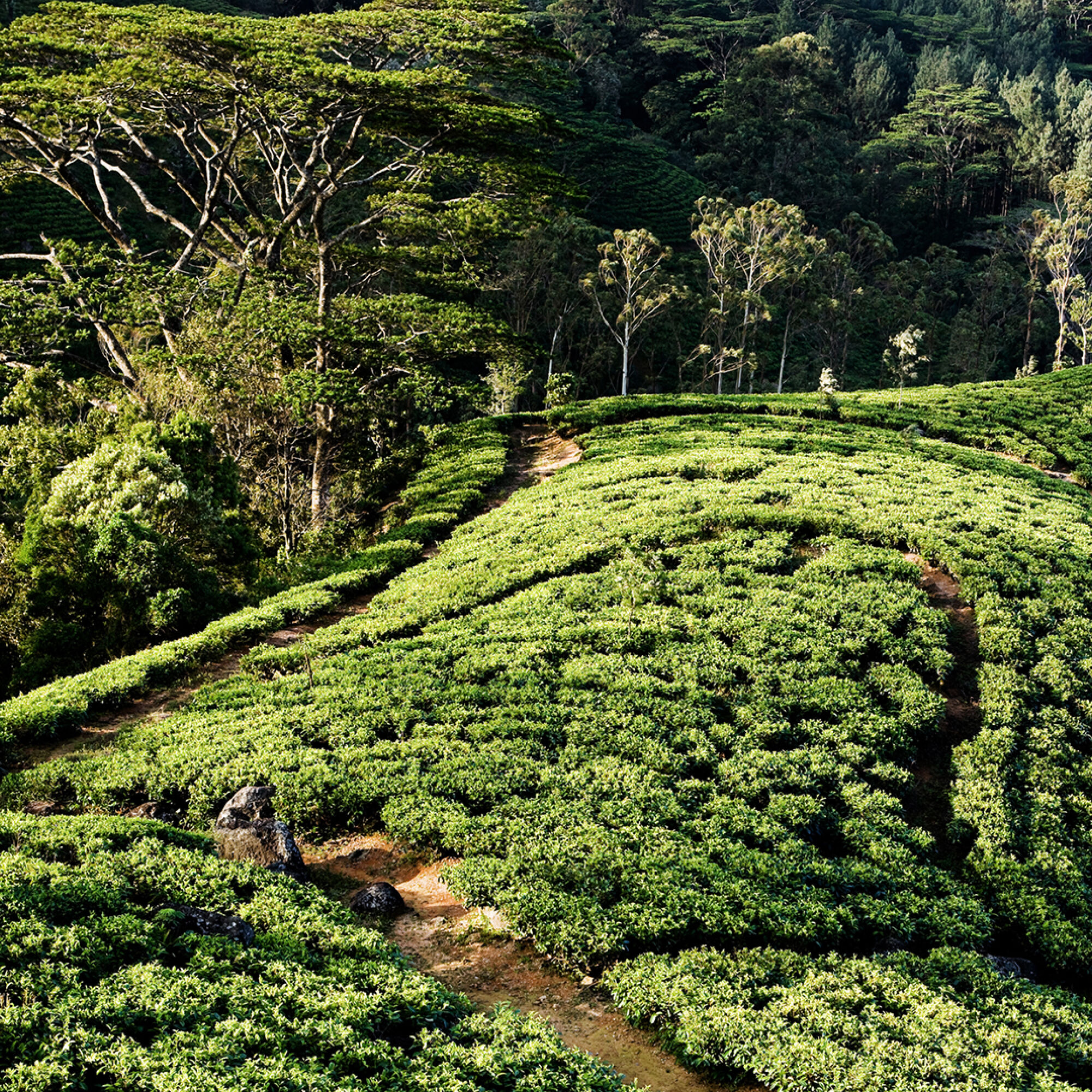
You have to do the right thing from the ground up.
Only 2% of tea sold worldwide comes from organic farming. Organic means that no chemical pesticides or synthetic growth promoters are used in growing the crops and no genetically modified plants are cultivated.

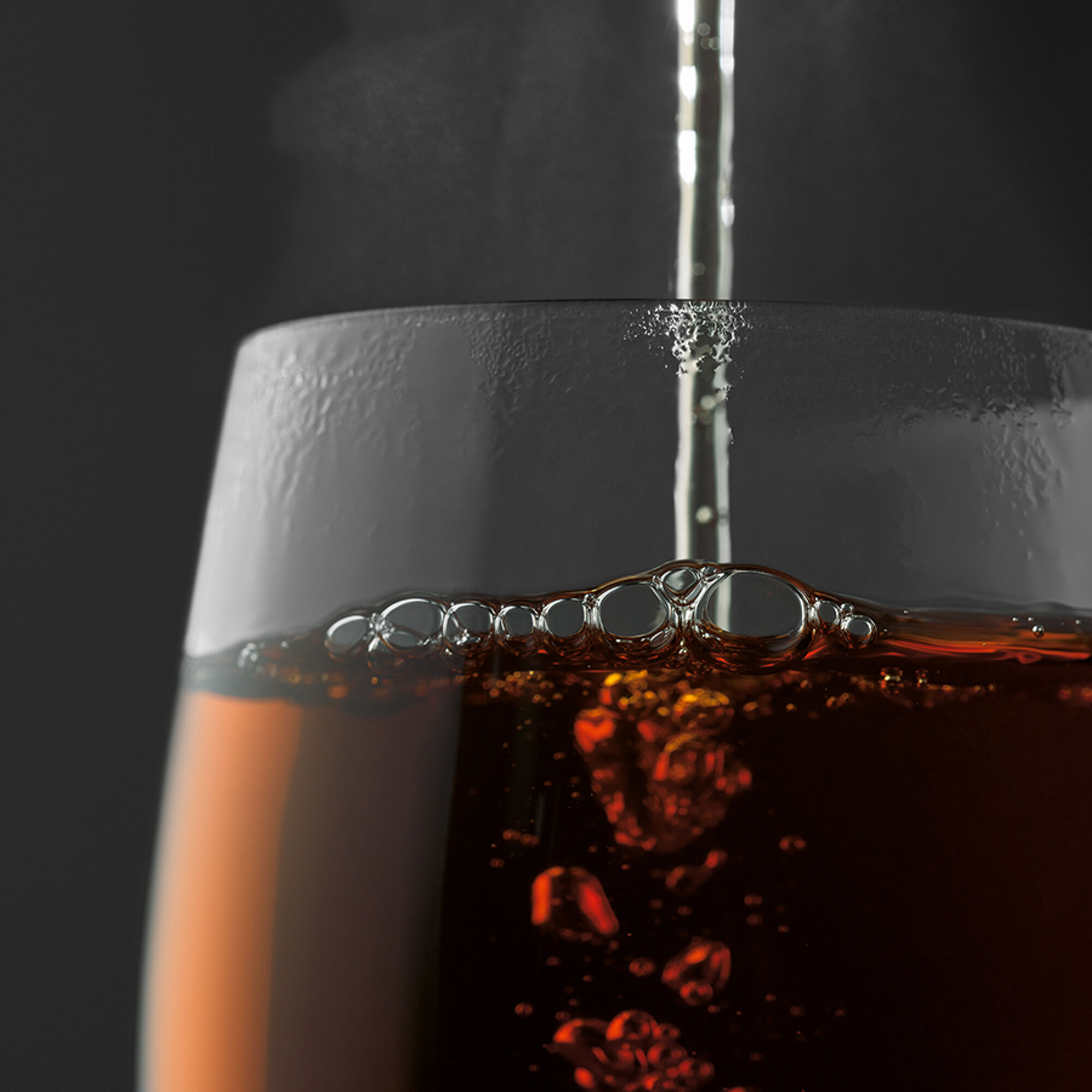
This is how we brew it.
Each tea has unique nuances and aromas that make it incomparable. Teas differ not only in their cultivation and production, but also in their preparation.
The right portion size of a tea is always dictated by the type of tea and by how strongly it unfolds its flavours. For example, black teas are stronger in taste and you need less tea when brewing it. The filling quantity in the Avoury tea capsule is therefore optimally adapted to the respective tea. In order to fully develop their aroma, teas and infusions need a lot of space and freedom of movement. For this reason, the special chamber system of the Avoury Tea Machine was developed so that the tea can circulate freely in the water inside the capsule. In general, the longer a tea is brewed, the faster the flavourings dissolve in the water. Each tea requires its own specific water temperature to develop every nuance of its taste. Black tea needs high temperatures, while white tea is much more sensitive. The Avoury system automatically detects which tea is brewing and adjusts the brewing temperature to the requirements of that tea. The result is that every tea tastes exactly as it should. Green tea is particularly demanding in its preparation. If the water is too hot or it is brewed for too long, bitter substances form. If the water is too cold, the aromas cannot dissolve. For newcomers to the art of drinking green tea, the Avoury Tea Machine is a particularly good alternative to conventional preparation. The right brewing time is important for a perfect result and it is different for each tea. Fruit infusions, for example, require a longer brewing time than most teas to fully develop their aromas. This is also recognised by the Avoury Tea Machine and the brewing time adjusted automatically. All you have to do is enjoy the tea.
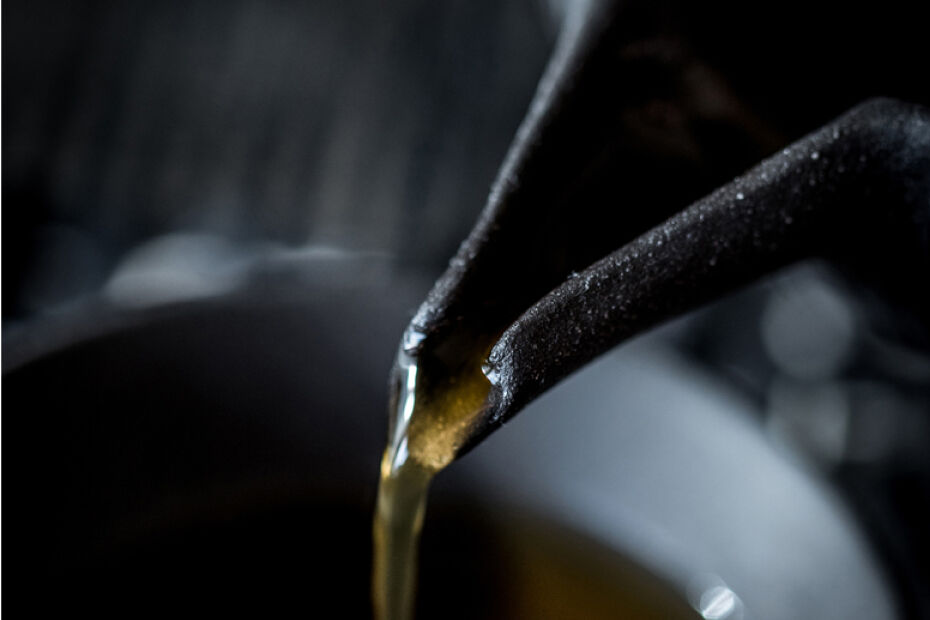
An imperial discovery.
According to legend, a Chinese Emperor named Shen Nung discovered tea almost 5000 years ago. The heat of his fire caused the leaves of the tree under which he was resting, to dry. By chance, some leaves blew into the kettle bubbling over the fire. The scent of the brewed leaves was so irresistible that the Emperor had to taste the potion. The taste and the stimulating effect was a revelation to him. He called the drink "t'sa" – "the divine" – and even today the Chinese word for tea is "cha".
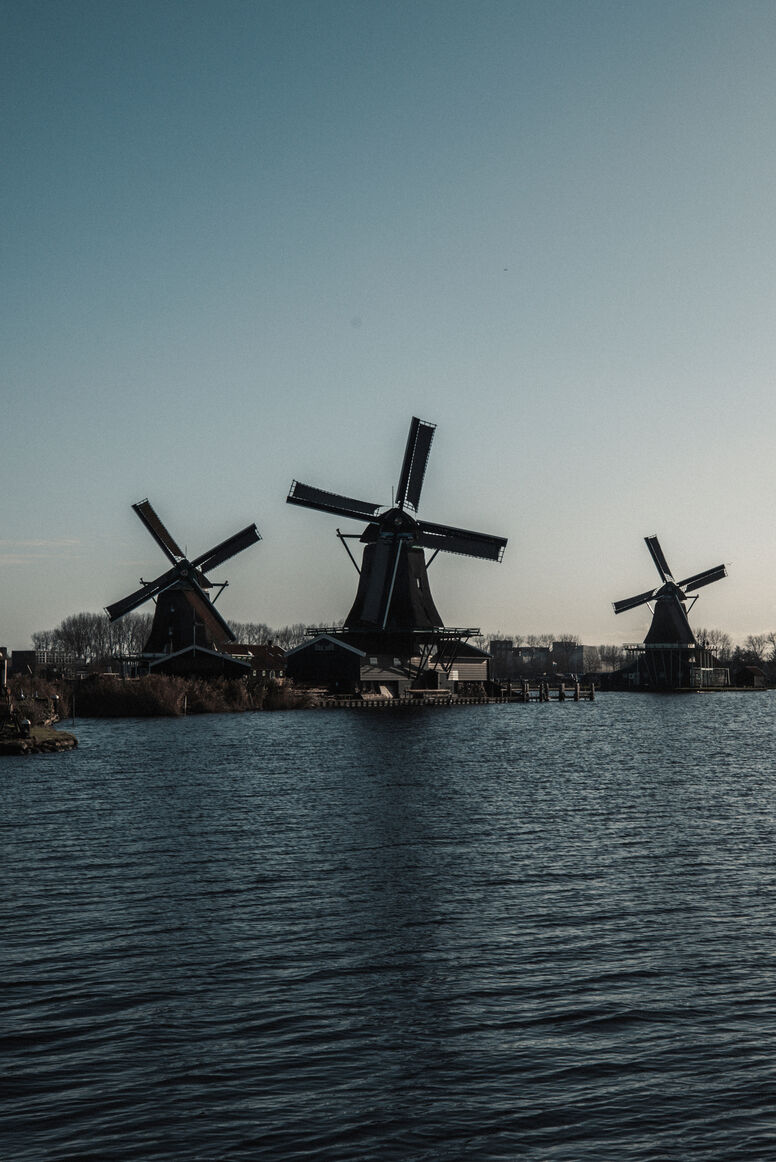
Tea makes its way to Europe.
It was only in the 17th century that tea started to be traded in Europe. The "Dutch East India Company" initially had the monopoly on tea. At first they mainly transported green tea but then changed to black tea, which lasted better on long sea routes. The new drink entered Holland via East Friesland. No wonder the East Friesians are still among the most zealous tea consumers in Europe.

Tea starts a revolution.
The English broke the Dutch monopoly and brought tea to America at the beginning of the 18th century. But when the British tried to tax the tea, there was an uprising – the so-called “Boston Tea Party”. Many crates of valuable goods were sunk in Boston Harbour. The resulting riots culminated in the American War of Independence.
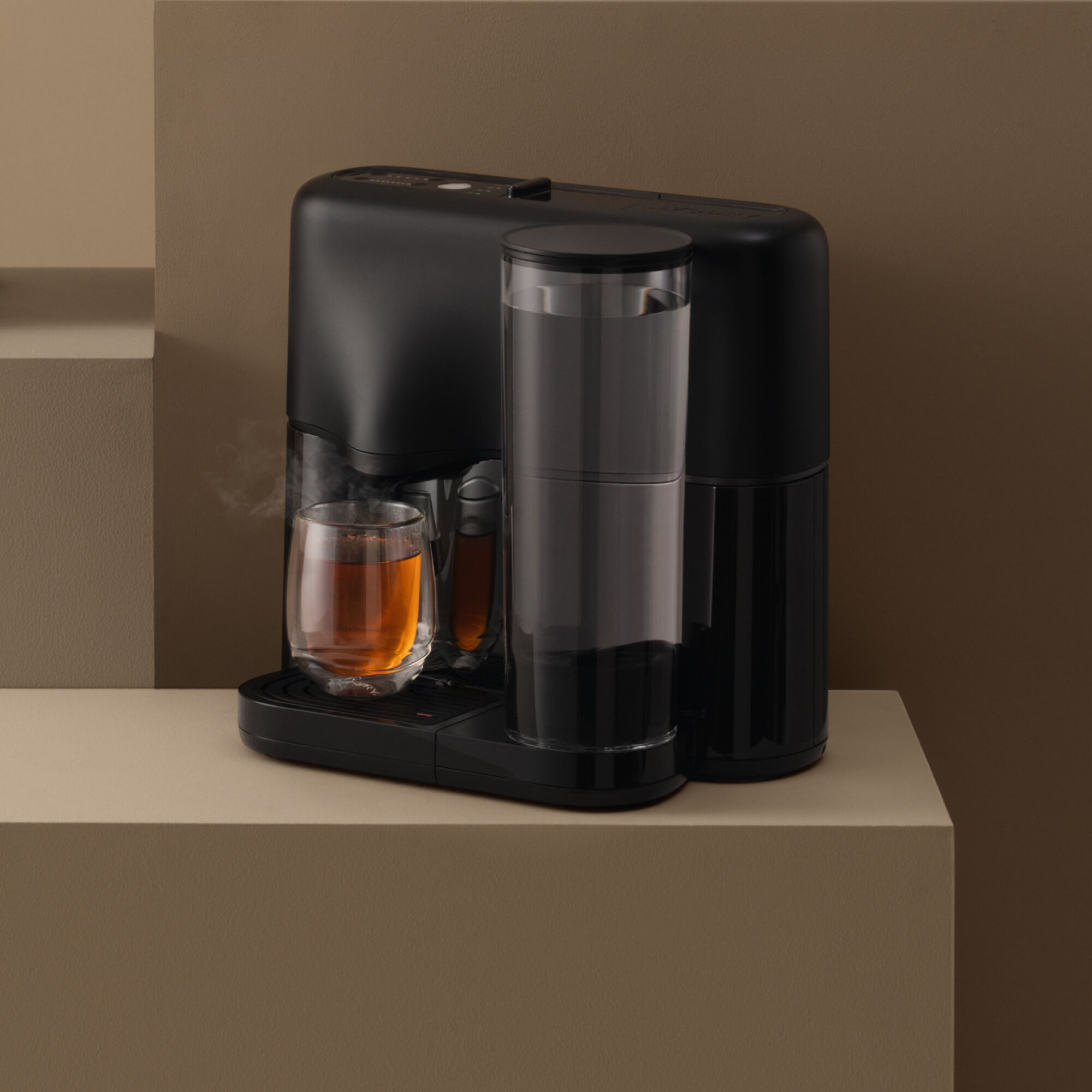
Today, anyone can enjoy a perfect cup of tea.
At approximately 1.7 million tons, the main players in tea production these days are China and India. In Germany, 73% of tea drinkers prefer black tea, followed by 27% choosing green tea. The practical tea bag is now again making way for the higher-quality preparation of loose teas – unfortunately a very complicated affair. So, if you want to enjoy a perfect cup of tea without all the fuss, simply use an Avoury Tea Machine.
Caffeine: stimulating, without fuss.
Why shake something to life if you can wake it up oh-so gently?
For a long time, the pick-me-up in tea was called "theine" – when in fact, it is actually the well-known drug caffeine. But in tea, the stimulant has a completely different effect than in coffee. This is because in tea, caffeine is bound to polyphenols. What this means, is that the shorter the brewing time of the tea, the higher the unbound amount of caffeine. Binding to tannins reduces the effect of caffeine in tea. This means that it is a little weaker than in coffee, but it lasts longer. The caffeine content in tea is dependent on many parameters. In addition to the plant, the growing region, the climate and the harvest time, the amount of tea, the brewing time and the water temperature are of great influence.
